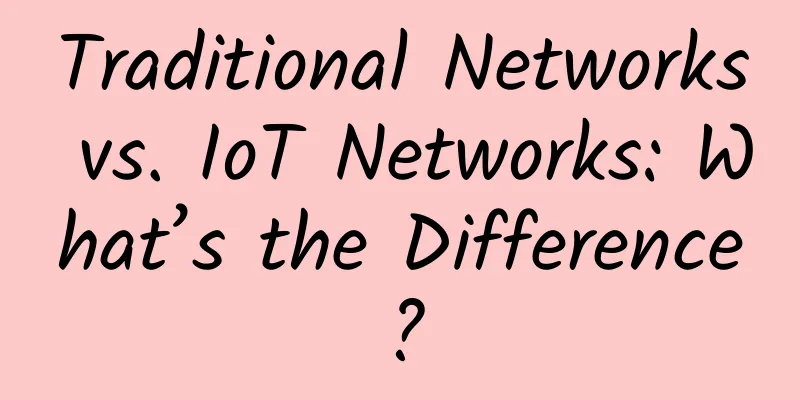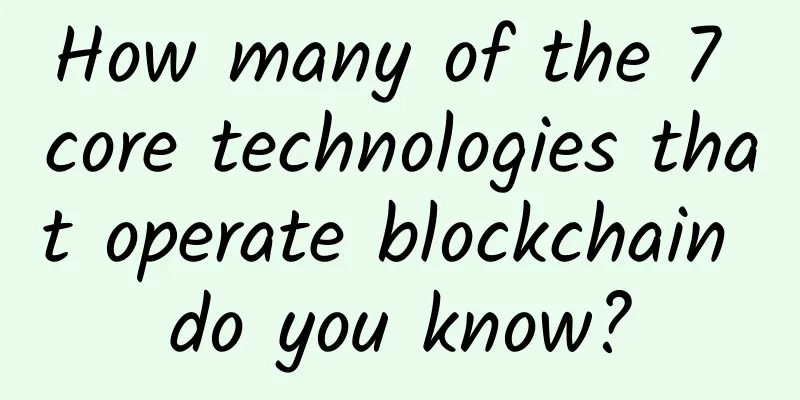5G and IoT: A closer look at how the next generation of mobile connectivity will unlock new opportunities

|
The arrival of 5G has been heralded as a pivotal moment in technological advancement. The fifth generation of cellular networks promises more than just ultra-fast mobile connectivity; it has the potential to unlock new possibilities that could transform the way people live, businesses operate, and cities function. The infrastructure is still in its infancy; although the UK's 5G network began rolling out in 2019, it will take several years to reach maturity. The government has set a goal of ensuring that a "majority" of the country has access to 5G by 2027. However, as base stations are built and upgraded, 5G is expected to be 100 times faster than typical 4G technology, with mobile internet speeds exceeding 10 gigabits per second (Gbps). Much of the noise in the public sphere will naturally focus on what the 4G upgrade will mean for consumers – seamless streaming, downloading and browsing. However, the real potential of 5G lies in how it will drive other technologies and trends. Indeed, a 2019 Ericsson survey of executives from 100 telecom operators around the world found that 92% believed the most important 5G feature was the way it would pave the way for emerging technologies. Chief among these is the Internet of Things (IoT), the physical devices on Earth connected to the Internet, enabling them to relay data, convey information and receive instructions. Peter Mildon, co-founder and COO of Vivacity Labs, said: “The main benefits of 5G deployment will be achieved through machine-to-machine communications – where the change from 0.2 seconds to 0.02 seconds latency is critical. Any system that requires near-instantaneous feedback will benefit, whether it’s traffic signal control, autonomous driving or remote surgical robots.” Dr David Hardman MBE is the Managing Director of Bruntwood SciTech in Birmingham. Bruntwood SciTech is the UK's leading provider of office and laboratory space to the science and technology sector, while also providing tailored business support to clients such as access to funding, talent, markets and mentors. Birmingham's Science and Technology Innovation Centre is also the Birmingham 5G Technology Innovation Centre. David noted that while 5G itself is not a disruptive technology, it is “a critical step in the path of existing disruptions, namely advances in mobile connectivity and smart devices.” He sees the arrival of 5G as “an enabler of advanced data management that will impact our daily lives,” adding that upcoming new technologies, such as driverless cars, smart ambulances and robotic surgery, are only possible with faster mobile connections. Investing in digital infrastructure Before exploring the new opportunities that the arrival of 5G will bring, it is first necessary to understand how 5G is being promoted in the UK. Recognizing the huge potential of 5G, the UK government has been investing heavily in the infrastructure needed to attract the next generation of mobile connections. Eleven digital infrastructure projects and programmes worth a total of £6.8 billion were planned in the National Infrastructure and Construction Pipeline in 2018. These projects aim to deploy 5G to most of the country by 2027 and full fibre coverage across the country by 2033. Building on this, in February 2020, Digital Secretary Oliver Dowden announced a £200 million investment in the 5G Testbed and Trials Programme (5GTT), which will explore new ways in which 5G can boost business growth and productivity, improve the lives of people in rural areas and maximise the productivity benefits of the new technology. Most recently, in July, six R&D projects using 5G technology were awarded government funding as part of the 5G Create competition. These projects will receive £30 million of funding from the 5GTT platform, which has been used to build 24 new 5G testbeds across the country, trialling nearly 70 different 5G technologies, products and applications. 5G Test Platform Dr Hardman explained: “5G testbeds are critical. The art of the possible is what you are looking for; if you are developing high-quality services around 5G, they need to be ready for the market once it is launched. This is only possible if you can test it and truly understand its potential.” To this end, specialist test sites have been created across the UK using public and private sector funding. These dedicated buildings or areas have real 5G connectivity and use this digital infrastructure to allow other organisations to develop new technologies and systems just as they would in a 5G-enabled environment. “The idea of test beds and accelerators like the one BruntwoodSciTech is providing is to bring hundreds of organisations together to trial what 5G can offer. Businesses will then go away and develop new technologies using 5G as part of their thinking.” Regional Promotion First, the government’s strategy for implementing a nationwide 5G network is to distribute national funds to individual regions, as demonstrated by the project-based approach of the 5GTT and 5GCreate initiatives. West Midlands 5G (WM5G), launched in early 2019, is a prime example of a 5GTT initiative. Robert Franks, Managing Director of WM5G, explains that the organisation has two main objectives: “Firstly, our mission is to accelerate network deployment across the West Midlands. We want to create the most connected region in the UK and we want as many people, businesses and public sector organisations as possible to benefit from this exciting new technology. “The second aim is to bring together trialists and technology organisations to test, prove and scale new 5G services for the public and private sectors across the West Midlands.” According to the latest data, the West Midlands is leading the way in terms of 5G coverage. Among UK regions, the proportion of the population connected to 5G is relatively high, at 7.34% (Birmingham is 11.19%). However, the figures also highlight that there is still a lot of work to be done in terms of fast-tracking the digital infrastructure for 5G use. Unleashing the Potential of the Internet of Things There is still much progress to be made. However, over the next few years, as base stations are installed and upgraded, 5G will play a major role in changing the lives of consumers and businesses. Most notably, it is seen as a major step forward in unlocking the potential of the Internet of Things, an already established area of digital innovation that increasingly sees everyday objects fitted with sensors and technology that allow them to connect to the internet. Technology analyst firm IDC predicts that there will be more than 41 billion connected IoT devices, or “things,” worldwide by 2025. In the years ahead, 5G will play a key role in unlocking new possibilities in this space. By providing more reliable and significantly faster mobile connections, 5G will ensure that IoT devices can process vast amounts of data: everything from cars and refrigerators to lampposts and CCTV cameras. The ability to collect, transmit, analyze and act on vast amounts of data – currently not possible due to slower connections – will in turn enable more sophisticated use cases in the IoT. There are already many examples in the UK. transportation The transportation industry is ripe for disruption from 5G and the Internet of Things. By enabling cameras and sensors to relay real-time data on what is happening on the road, action can be taken quickly – or automatically – dramatically improving the efficiency of transportation systems. SmartJunctions5G, a collaboration between Vivacity, WeaverLsat and Transport for Greater Manchester (TfGM), is a clear example of this. Building on the existing SmartJunctions project, the new chapter of the initiative aims to deliver AI-driven traffic control systems to reduce congestion and pollution, and improve productivity by reducing waiting times at traffic lights. Peter Milton of Vivacity said: “As an innovative transport agency, TfGM wants to embrace new technologies to deliver services in a smarter, more efficient way whilst minimising costs – 5G is the logical next step in providing seamless connectivity for the people of Greater Manchester and improving the efficiency of the public body’s systems.” WeaverLabs has been tasked with creating a private 5G network that will allow wireless communication between sensors and Junction’s cloud-based AI decision-makers. “This use case requires very low latency communications to work,” Peter said. “By eliminating the need for wired connections, the cost of deploying SmartJunctions products will be reduced.” The SmartJunctions5G project brings many benefits. Peter explains: “The money required to roll out the system has a compelling return on investment as economic value can be assigned to productivity savings, reduced waiting times and a green policy that prioritises cyclists and walkers. The system also removes the need to recalibrate traffic junctions, which currently creates a revenue burden for local authorities. “The learnings and expertise will also help TfGM better understand the opportunities for this technology, building a lasting connectivity pathway for future technology trials – the Smart Connect project can provide a blueprint to be replicated and rolled out across Greater Manchester.” Smart City Projects such as SmartJunctions5G highlight why the next generation of mobile connectivity is being hailed as a precursor to smart cities. Making cities “smart” has become a mantra for governments and local authorities around the world. The goal is to use data, sensors and connected devices to improve government services and the quality of life of residents through analytics and automation. Robert Franks of WM5G noted that the organisation had piloted its own smart junction project with Vivacity, which would now be rolled out across the region in the coming year. Franks also provided a second example of 5G’s impact on the transportation industry: WM5G worked with AppyWay and Vodafone on a trial that placed cameras on municipal vehicles as they drove along Birmingham streets performing their daily duties. The cameras were used to identify parking spaces, which could then be provided to motorists in the area. “At the moment, it takes an average of six minutes for people to find a parking space in a town or city,” Franks said. “But by installing cameras on these vehicles, which are driving down the street anyway, you can get a real-time picture of where there are free parking spaces – this saves motorists time and petrol, and crucially, this solution can be implemented with a fraction of the cost of installing sensors in parking spaces.” Again, the role of 5G is that of an enabler - by allowing more responsive, automated and informed decisions to be made across cities, not only will consumers and businesses benefit, but the impact on the environment will also be significant. According to O2, 5G will help remove 181 million tonnes of CO2 from the atmosphere by 2035. Transforming healthcare The healthcare industry will be another major beneficiary of 5G technology. In fact, David Hardman from Bruntwood SciTech said: "Medicine will see a lot of interesting use cases. There are likely to be huge advances in areas such as augmented reality, which will enable robotics and acute surgery that simply can't be done at the moment." Robert Franks offers a practical example. “The problem right now is that paramedics can’t do ultrasounds at the scene of an injury or in the ambulance,” he explains. “You have to be a qualified physician, and you have to do these tests regularly to know what you’re looking at.” However, a year ago, WM5G conducted the UK’s first 5G ultrasound trial at University Hospital Birmingham and BT. We demonstrated the potential of a 5G network to connect doctors in a hospital with paramedics in an ambulance miles away. “By forwarding the images in real time and attaching a joystick to a haptic glove worn by a paramedic, doctors can remotely guide them through an ultrasound scan of the patient, enabling them to diagnose the problem more accurately. This would not be possible using 4G as it is simply not fast enough.” WM5G is also exploring how 5G can be used to better connect doctors and clinicians with older people in care homes. “In addition to video consultations, 5G will not only enable us to measure many aspects of a patient’s health, but also make more informed decisions,” Franks explained. “Given that the coronavirus pandemic has highlighted how much we don’t want to transport older people in and out of hospital unnecessarily, this solution obviously has huge relevance in improving social care.” 5G, collaboration, and COVID-19 As the above examples show, collaboration between academia, the public sector, and the private sector is essential for 5G and IoT to flourish. First, public investment in digital infrastructure is essential to ensure that 5G deployment proceeds on time and to high quality. But thereafter, if 5G “enabler” status is to be achieved, private and public sector groups must work together. Dr Hardman said one of the keys was to first establish the right use cases for the technology, pointing to the NHS and education sectors as common examples where this was often misjudged. “In their quest for innovation, the public sector needs to define what they need and under what conditions it can be used, which means the private sector can work against that,” David said. “That ensures projects are successful, rather than the private sector coming up with ideas and then selling them to institutions like the NHS or education system.” “Businesses may be creating ‘the best technology since sliced bread,’ but when they try to sell that technology, they often realise there’s no need for sliced bread in that industry or organisation. So collaboration between public and private institutions is really important.” COVID-19 accelerates the need for 5G Robert Franks said COVID-19 had accelerated many digital trends over a “two to five year period”, with remote work, remote learning and telemedicine being key examples. David Hardman added that the pandemic had “promoted the use and acceptability of digital communications”, meaning that in the long term, the adoption of 5G and IoT technologies would become easier. Peter Mildon echoed this sentiment: “Covid-19 has accelerated the need for IoT systems that can provide anonymised data on road usage, from measuring social distancing to mapping how changing lockdown rules are manifesting to shifting transport behaviour patterns.” However, the challenge facing many organizations is how to obtain the skills, capabilities and support they need so that they can take advantage of the digital transformation trends that have become increasingly important since the start of the pandemic. To this end, innovation centers like the one provided by BruntwoodSciTech, and the cross-sector collaborative approach provided by organizations such as WM5G and the SmartJunctions5G project will be crucial. Ultimately, the arrival of 5G promises to dramatically change the core systems and processes that govern our daily lives. Just as the proliferation of smart devices and cloud computing over the past two decades opened the door to all manner of innovation, so too will ultra-fast mobile connectivity help shape the structure of government and business in the years ahead. |
<<: How to build a strong network during the COVID-19 pandemic?
Recommend
Racing against time: Why does Weimob's data recovery take so long?
Several days have passed since the WeMall "d...
Is the network slow because of insufficient bandwidth? 5 tips to optimize network bandwidth
Long ago, internet signals were transmitted over ...
The "tragic" situation of operators' operations
Previously, a joke mocking the operators caused a...
Ruishu's next-generation WAF-WAAP platform has three major engines that fully upgrade application security protection
In recent years, web applications have become the...
Inventory: Three basic elements and five characteristics of the Industrial Internet
Three basic elements of the Industrial Internet S...
5G empowers the transformation and upgrading of the banking industry. How should banks innovate in the 5G era?
Recently, China Mobile and Industrial and Commerc...
Created a debuggable gRPC GUI client
[[437208]] This article is reprinted from the WeC...
Application of multimodal algorithms in video understanding
1. Overview At present, video classification algo...
Four experiments to thoroughly understand the disconnection of TCP connections
[[431016]] Preface Seeing this title, you may say...
Operator workers: What are your plans after receiving your year-end bonus?
It’s the end of the year again. Regardless of whe...
From 0G to 5G, the ups and downs of mobile communications over the past century
During World War II, Motorola's SCR series wa...
How to determine whether two IP addresses are in the same network segment? What is a subnet mask?
We have read many articles before about IP addres...
my country will start deploying and building IPv6 address projects in 2017
[[181003]] A reporter from the Economic Informati...
Cloud is still the protagonist of Huawei Connect 2017; Huawei invites you to "grow everything" together in the cloud era
[51CTO.com original article] From September 5 to ...
NTT and Cisco jointly provide hybrid office solutions to lay the foundation for the future of work
We are entering a new normal in the way we work. ...









